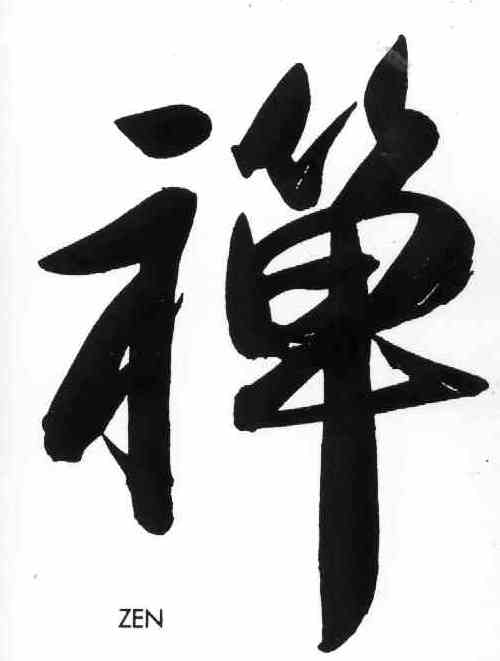ZEN IS ZEN, TAO IS TAO

The Chinese word for "Zen"
Zen is Zen, Tao is Tao
I understand that the title of this thread “That was Zen, This is Tao” is a play on words. For our foreign members who may not understand the pun, the original phrase in English is “That was then, this is now.”
Nevertheless, I think this play on words may give a false impression of what Zen was, and what it is now. Although both Zen and Taoism obviously lead to a similar goal, their methods for getting there are quite different. They may be two roads leading to the same destination, but they are most definitely two different roads.
The idea that Taoism and Chan (Zen) were cross-fertilized is a typical modern misunderstanding, and one that is usually perpetuated by scholars (and usually Western ones) — not Chan masters. Taoism and Chan have separate histories. In the development of Chan in China, none of the six patriarchs had any influence from Taoism. Bodhidharma (Da Mo), Hui Ke, and Seng Can all taught at Shaolin. Dao Xing, Hong Ren, and Hui Neng taught at Baolin and Dongshan (both Buddhist temples).
One need only to look at the priests of Taoism and Zen to see some of the differences: Zen monks shave their head, are vegetarian, avoid wine and intoxication, value the Heart Sutra, and practice celibacy; Taoist priests generally have a full head of hair, drink wine, value the Dao De Jing, and are permitted to have wives (and sex!).
Or we might look at their meditation techniques. In Zen, practitioners keep their mind on the void. In Taoism, visualization is used extensively in meditation. From a Zen perspective, these visualizations are considered a “deviation” because they cause thoughts to arise, which conflict sharply with Zen teachings (but not with Taoist teachings).
Chan talks about no mind (wu xin), and Taoism talks about the extreme void (wu ji). To a Western ear, these terms may sound similar, but upon closer examination, they are obviously quite different. Of course, both terms refer to “cosmic reality” and are thus similar. But this does not point to a link between Taoism and Chan; it points to a link between all of the world's religions, all of which point to the concept of this “cosmic reality.”
Bodhidharma's teaching can be summarized as follows:
- Not recorded in language and words.
- Transmission beyond the tradition.
- Directly pointing at the mind.
- Entering Buddhahood in an instant.
These concepts (which I have no time to explain at the moment) are vastly different from Sarvastivada (which is essentially a Hinayana school) teachings. Actually, Bodhidharma's teachings were a reaction AGAINST Sarvastivada teachings, not a continuation of them.
As for Zen Buddhism being different today than it was in the past — this depends on where we look, just as it does with Kungfu. If we look at modern Shaolin Wushu, we might say that Kungfu is different today than it was practiced in the past. But if we look at genuine Kungfu schools, we might say that it is very much the same.
LINKS
Topics on Zen and Tao
- Zen is Zen, Tao is Tao
- Mistaking the word “Tao” for Taoism
- Zen Writings and Taoist Writings are Characteristically Different
- Simple in Language, Profound in Meaning
- Flowery Language in Buddhist Writings
- Symbolism in Zen Writings?
- A Parable — An Expedient Means for Spiritual Cultivation
- Yin-Yang and Non-Duality
- Wu Wei and the Void
- Zen and Tao
